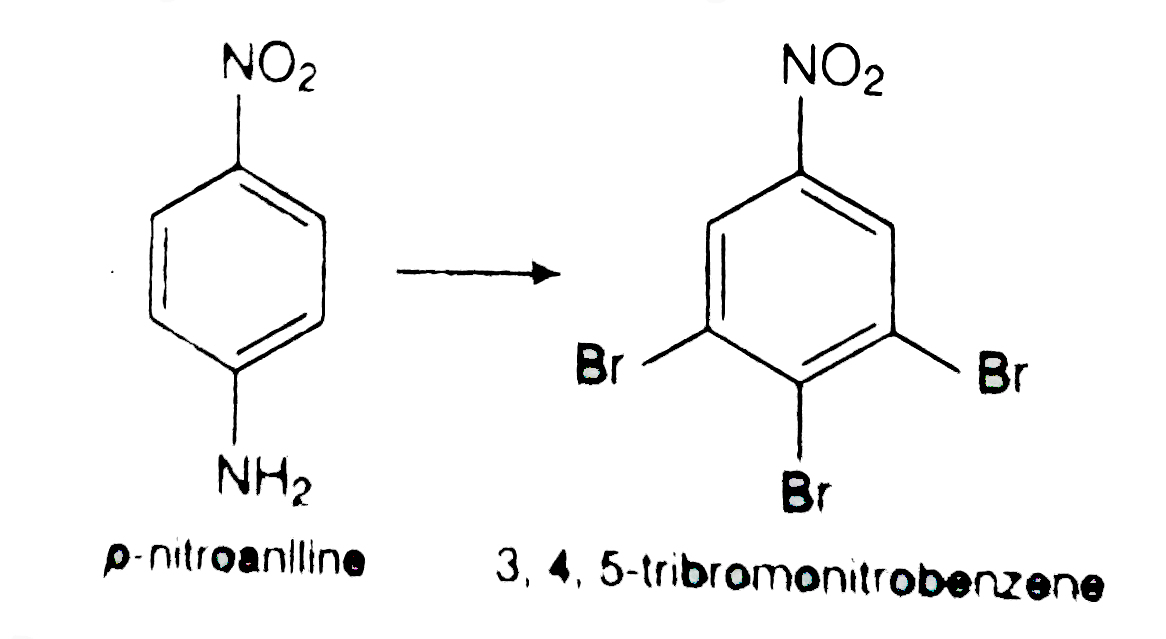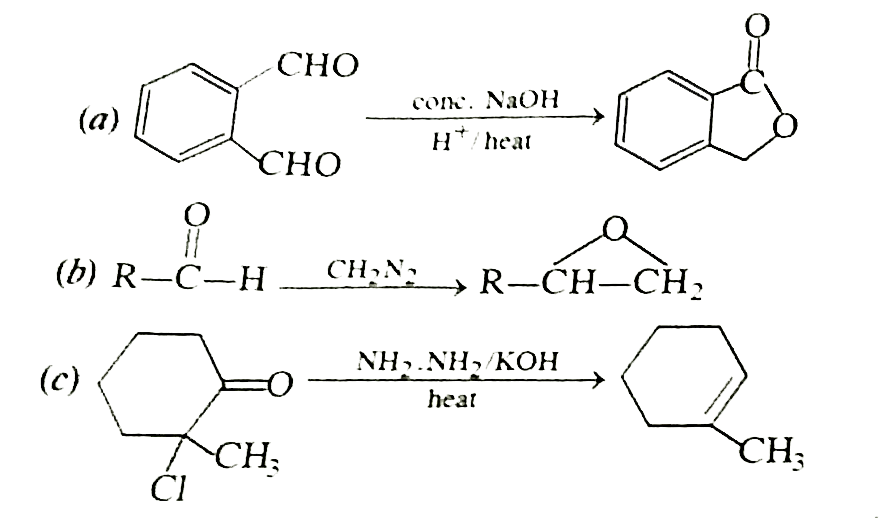How would you bring about the following conversions:
Propanal to butanone
To convert propanal (CH3CH2CHO) to butanone (CH3C(O)CH2CH3), we can follow these steps:
Step 1: React Propanal with Grignard Reagent
1. Starting Material: Propanal (CH3CH2CHO)
2. Reagent: Grignard Reagent (e.g., CH3MgBr)
3. Reaction: The Grignard reagent acts as a nucleophile and attacks the carbonyl carbon of propanal. This results in the formation of a magnesium alkoxide intermediate.
Reaction:
CH3CH2CHO+CH3MgBr→CH3CH2C(OMgBr)(OH)CH3
Step 2: Hydrolysis of the Alkoxide
4. Hydrolysis: The alkoxide intermediate is then treated with water (or dilute acid) to protonate the oxygen, yielding a secondary alcohol.
Reaction:
CH3CH2C(OMgBr)(OH)CH3+H2O→CH3CH2CHOHCH3+Mg(OH)Br
Step 3: Oxidation of the Alcohol
5. Oxidizing Agent: Use an oxidizing agent such as KMnO4 or K2Cr2O7 to oxidize the secondary alcohol to a ketone.
Reaction:
CH3CH2CHOHCH3KMnO4−−−−→CH3C(=O)CH2CH3
Final Product
6. Product: The final product is butanone (CH3C(O)CH2CH3).
Summary of the Steps
1. React propanal with a Grignard reagent to form a secondary alcohol.
2. Hydrolyze the alkoxide to obtain the secondary alcohol.
3. Oxidize the secondary alcohol to form butanone.
---
1. Starting Material: Propanal (CH3CH2CHO)
2. Reagent: Grignard Reagent (e.g., CH3MgBr)
3. Reaction: The Grignard reagent acts as a nucleophile and attacks the carbonyl carbon of propanal. This results in the formation of a magnesium alkoxide intermediate.
Reaction:
CH3CH2CHO+CH3MgBr→CH3CH2C(OMgBr)(OH)CH3
4. Hydrolysis: The alkoxide intermediate is then treated with water (or dilute acid) to protonate the oxygen, yielding a secondary alcohol.
CH3CH2C(OMgBr)(OH)CH3+H2O→CH3CH2CHOHCH3+Mg(OH)Br
5. Oxidizing Agent: Use an oxidizing agent such as KMnO4 or K2Cr2O7 to oxidize the secondary alcohol to a ketone.
Reaction:
CH3CH2CHOHCH3KMnO4−−−−→CH3C(=O)CH2CH3
6. Product: The final product is butanone (CH3C(O)CH2CH3).
1. React propanal with a Grignard reagent to form a secondary alcohol.
2. Hydrolyze the alkoxide to obtain the secondary alcohol.
3. Oxidize the secondary alcohol to form butanone.
Topper's Solved these Questions
- ALDEHYDES, KETONES AND CARBOXYLIC ACIDSBOOK - ICSECHAPTER - ALDEHYDES, KETONES AND CARBOXYLIC ACIDSEXERCISE - ISC EXAMINATION QUESTIONS (PART-I OBJECTIVE QUESTIONS) (FILL IN THE BLANKS)
27 Videos
- ALDEHYDES, KETONES AND CARBOXYLIC ACIDSBOOK - ICSECHAPTER - ALDEHYDES, KETONES AND CARBOXYLIC ACIDSEXERCISE - ISC EXAMINATION QUESTIONS (PART-I OBJECTIVE QUESTIONS) (MULTIPLE CHOICE QUESTION)
24 Videos
- ALDEHYDES, KETONES AND CARBOXYLIC ACIDSBOOK - ICSECHAPTER - ALDEHYDES, KETONES AND CARBOXYLIC ACIDSEXERCISE - EXERCISE (PART-II DESCRIPTIVE QUESTIONS) (VERY SHORT QUESTIONS)
282 Videos
- ALCOHOLS, PHENOLS AND ETHERS BOOK - ICSECHAPTER - ALCOHOLS, PHENOLS AND ETHERS EXERCISE - ISC EXAMINATION QUESTIONS
25 Videos
- APPENDIX II ( TYPICAL CONVERSIONS)BOOK - ICSECHAPTER - APPENDIX II ( TYPICAL CONVERSIONS)EXERCISE - AROMATIC CONVERSIONS
98 Videos
Similar Questions
How will you bring about the following conversions ?

View SolutionHow will you bring out the following conversion?

View SolutionHow will you bring about the following changes :

View SolutionHow would you bring about the following conversions:
Benzaldehyde to benzophenone
View SolutionHow will you bring about the following conversions?
(1) Propanone to propane
(2) Benzyl chloride to benzaldehyde
View SolutionHow will you bring about the following conversions :
Propanoic acid to lactic acid
View SolutionHow will you bring about the following conversions?
Propanoic acid to acetic acid
View SolutionHow will you bring about the following conversions?
Ethanol to ethanoic acid
View SolutionHow would you bring about the following conversions ? Name the process and write the reaction involved.
(a) Ethanol to ethene , (b) Propanol to propanoic acid
Write the reactions.
View SolutionHow will you bring about the following conversions :
(i) Ethanol to acetone
(ii) Benzene to acetophenone
(iii) Benzoic acid to benzaldehyde.
View Solution
